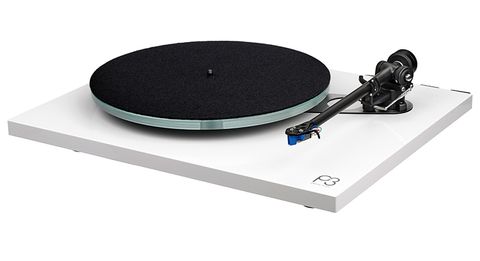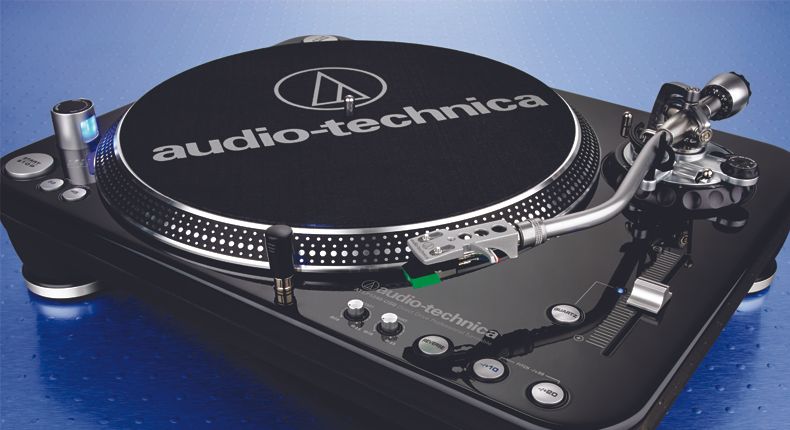The narrative of this renowned record player begins in 1972, when it first emerged from the Castlemilk factory, blinking into the Glasgow sunlight. That was a long time ago, and the Sondek has been chastised in recent years for being “old hat.” It may lack the acres of gleaming Perspex and fancy gold-plated finery that seem to be so fashionable these days, but it wasn’t exactly at the forefront of fashion when it was released either – and proudly so. It was all about getting the most out of a traditional three-point sprung subchassis design, as seen in the original Acoustic Research white paper, rather than eye-catching design flourishes. Belt drive was chosen since it was (considerably) quieter than idler, and direct drive had only recently been invented! The LP12 was all about carefully constructed component components, meticulously built to perform well together, rather than the application of new research…
It served its purpose. In its original form, the LP12 was a lovely sounding machine. If you’ve never heard an early deck, you’ll be astounded by its richness. Even though it was a long way from neutral, the stock Sondek was a lot of fun to listen to. The bass was massive, sensuous, and little exaggerated, the midrange was silky smooth, and the treble was as sweet as builders’ tea. Although many people praised the deck’s tonality, it was the way it stitched together the musical picture that set it apart from rival decks like the Heybrook TT2 and Ariston RD11. The LP12 simply had a rhythm that its competitors lacked, making music incredibly enjoyable – almost unnaturally so, according to critics.
By 1981, the Sondek’s sound had evolved slightly. The Nirvana spring and motor mod kit (from 32,826) and modified main bearing (serial number 2000) allowed for a tighter, more gripping sound, with the LP12 losing some of its bass bloom and midband warmth. The Valhalla crystal-driven power supply board (38,794) was the first major alteration, and it dramatically tightened up the sound. Indeed, I’d argue this was the point at which the original LP12’s romance gave way to a more incisive and searching design; its ‘second age,’ if you catch my drift.
Suddenly, the LP12 began to be critical of pressings, telling you exactly what was in the groove rather than giving you a larger-than-life impression of it. The deck was still enjoyable to listen to, but it was distinct. In terms of accuracy, it was significantly superior; you could hear the intervals between notes much better, and instruments stopped and started with far greater speed. The LP12’s dynamics improved as well, making it a more powerful and meaningful experience.
More alterations to the LP12 were made in the 1980s, taking it further away from the thick, luscious sounding original. The plinth, for example, was tightened (53,000), the sub-chassis was strengthened (54,101), and the suspension springs were stiffened. In 1987, a better bearing (70,000) and armboard (79,160) were introduced, but it wasn’t until 1990 that the LP12 entered its third age, with the introduction of the Lingo power supply and, shortly after, the Cirkus mod package (90,582)….
The deck shifted away from euphony and toward precision once more. In my opinion, the Lingo was a significant advance over the LP12, providing a much more explicit feeling of the spaces between the notes once again. However, not everyone thought it was a good thing; the old Valhalla Linn (and much more so the pre-Valhalla) slurred them slightly, giving them a more mellifluous, if indistinct, sound. The Lingo seemed to go in there with a knife and chop out all the fat, making the Sondek a much drier sounding device than the original generation of Sondeks from the 1970s.
If the Lingo worked on the deck’s timing, the Cirkus worked on its detail retrieval, introducing an entirely new layer of data. Rather than focusing on the center and forward images in the mix, you could suddenly hear through to the back of the recorded acoustic. The LP12’s soundstaging increased substantially as well; previously, it was a touch closer to dual-channel mono than it should have been, with instruments hanging to the left or right with little in the middle (as if every LP had been remixed by George Martin at Abbey Road, circa Sgt. Pepper). This was altered by the Cirkus, which provided a more realistic representation of the recorded acoustic.
In my opinion, the Cirkus/Lingo LP12 was still on the cutting edge in the early 1990s. Only when Michell’s Orbe debuted in 1995 could you truly say it lacked — the latter having a more expansive soundstage, stronger and more solid bass, and superior treble detail. Nonetheless, the LP12 had the funk while the Orbe lacked it, with the Michell delivering a more straightforward account of the musical event.
Many reviewers would confidently endorse this deck as “the greatest” in the early 1980s, but twenty years later it was found weak in speed stability against the Roksan, soundstaging against the Michell, and bass grip against the Pink. We’d gotten to the stage where you’d bought the Linn for its musicality rather than its total versatility. Still, it did what it did beautifully; cue up Wooden Ships by Crosby, Stills, Nash, and Young, and the Linn was the only deck in town. Others simply told you how awful the original recording quality was, however this one had a gorgeous, flowing melody that appeared to perfectly capture the soul of the song.
This is why customers continue to purchase the LP12. Contrary to what the company’s critics allege, it’s not about deceptive marketing, pushy sellers, or anything else. Linn customers aren’t stupid; they understand what they like and why they appreciate it. The deck sings with jazz; it’s still one of the best hi-fi moments I’ve ever heard with a decent classic BlueNote pressing; and it really understands rock. Everything from The Pixies’ richly textured floods of sound to some sweet Rickie Lee Jones sounds amazing through the Sondek. However, if you play any classic electronica, like as Kraftwerk’s Tour de France Soundtracks, Avid’s Acutus gets a lot deeper into it. So here we are now, with a deck that is fantastic in places but not quite the all-around superdeck slayer it once was…
Of course, the new Radikal DC motor update claims to change all of this. Now, I’m not going to get involved in the ‘DC is better than AC’ debate (or vice versa), because I’m no longer young and naïve enough to believe that theories matter more than practice. Just because a 500-horsepower sports vehicle sounds wonderful on paper doesn’t guarantee it’ll deliver on its promise of pure, unadulterated driving enjoyment in practice. To summarize, Linn’s Ivor Tiefenbrun was previously a DC motor sceptic who has clearly changed his views. This isn’t a sign of hypocrisy or cynicism on his behalf; rather, it’s a matter of expediency. Linn should provide a DC motor if they can make it operate better, he believes.
To sum it up. The Linn LP12SE Lingo is a very stunning sounding basic (if you can call it that). While it doesn’t quite match Avid’s Acutus in terms of retrieving massive amounts of data from the disc, there’s no doubting that it’s a fun listen – especially when listening to jazz or rock music. The Linn is a Linn, and it sounds like a Linn, so it won’t appeal to Avid, SME, or even middle-of-the-road Michell purchasers. However, if you’re a Linn fan, the LP12SE Lingo represented the pinnacle of a fine breed. “It don’t mean a thing if it ain’t got that swing,” as the Chic song so eloquently put it, and this could as well be the theme tune to the Linn Sondek LP12…
The Sondek’s (Lingo) ability to chew through even the worst-sounding LP and make it into sweet, pleasant, easy listening is unrivalled. On the Avid Acutus, recordings that would have me hiding behind the sofa hardly raised an eyebrow, Roger Moore-style. Jaws hung solidly at the precise angle, and eyelids remained unbattered. As a dog-eared copy of The Box Tops’ The Letter proved, the stock LP12 can magically filter out all the recording’s faults. This would not be my first pick to test any turntable with, since it is a low-fi sixties tune supplied via an LP record that had gone to one too many of my teenage parties and was then left to fend for itself in the vinyl teenage torture chamber that was my younger brother’s record collection. But, lo and behold, via the LP12 Lingo, music soaring with passion, brimming with emotion, and full of ecstasy poured forth…
When you listen to the latest LP12 Radikal, you’ll notice a reduction in surface noise and a greater gap between the notes. The music becomes less euphonic and more deliberate. The production effects are more precise, the snare drum pierces into the middle distance, and those vocals sound curiously closer miked, before they had been hazy, sluggish, and laconic. The song transitions from being ‘beautiful’ to being genuine. In terms of the LP12, this is where the transition from Lingo to Radikal occurs.
It’s a very costly turntable these days; a fully loaded one will easily set you back £10,000. At that price, you get a superior build, finish, and still-distinctive sound that simply gets in there and gets the job done musically. It’s not a universal cure-all, but for those who want that distinct LP12 sound — and many do, naturally – this is still the best option. Long may it continue…






